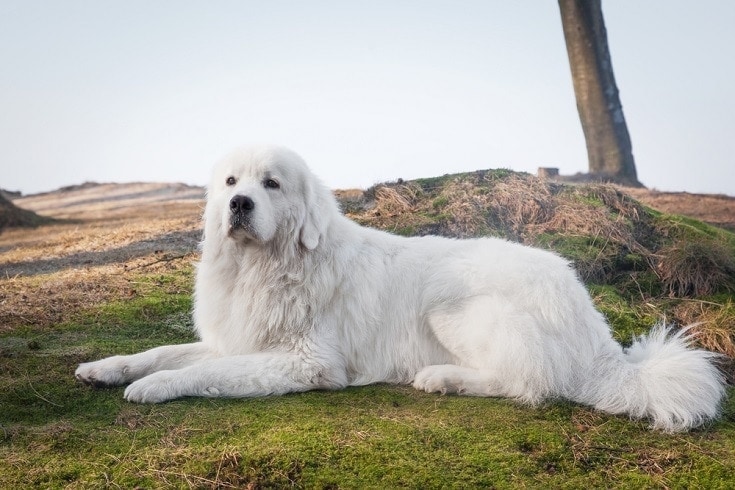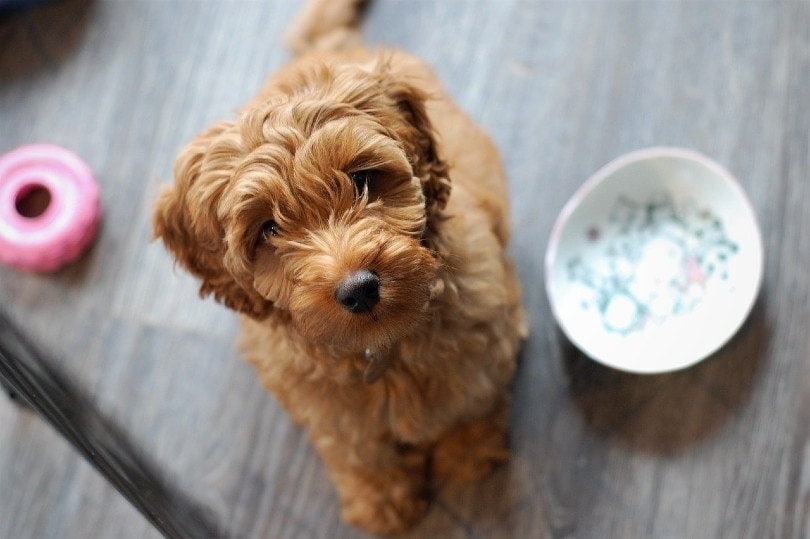Are Pugs Hypoallergenic? Vet-Reviewed Dog Allergy Facts

Updated on
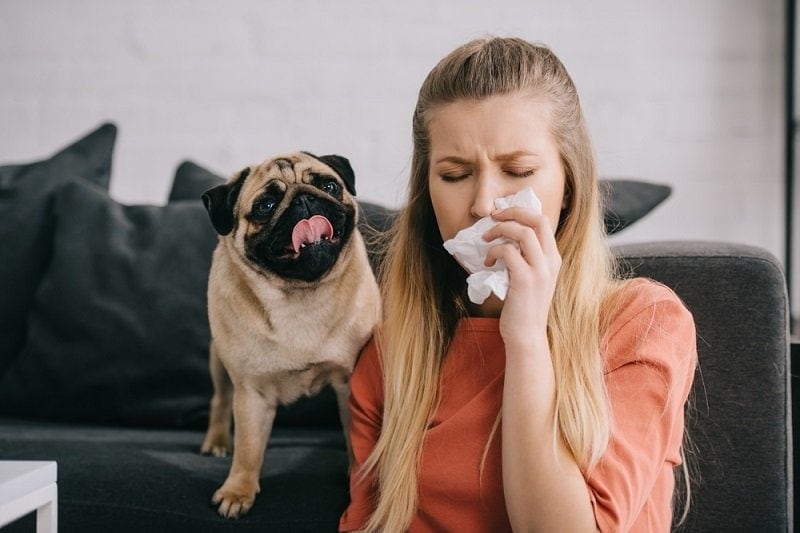
Pugs are adorable little pups that make excellent pets for almost everyone. With their laidback temperament and entertaining personalities, you’re sure to have a blast with one of these dogs. However, if you’ve been considering adopting a Pug but are allergic to dogs, you need to know whether they are hypoallergenic or not.
Technically, no dog is 100% hypoallergenic; it’s just that some shed less hair and produce less dander than others, so they may be less allergenic for some people.1 Unfortunately, the Pug is not hypoallergenic or even less allergenic. So, if you have intense allergies, the Pug—or in fact, any dog—might not be your best option. However, if your allergies are fairly mild, there are a few things that you can do to reduce your allergy symptoms around Pugs.
Dogs & Allergies
What causes a person to be allergic to a dog in the first place? Many think that it’s a dog’s hair, but the real culprit is proteins found in dog dander, saliva, and urine.
Dander is microscopic shed dead skin cells. As these are small and lightweight, they can remain in the air for a long time and can easily stick to furniture, bedding, and other household items. Dander is also attached to dog hair, so dogs that shed a lot will leave more dander in their wake (hence why people often believe that it’s the hair itself that causes allergies).
Saliva seems an odd thing for one to be allergic to, but your pet’s saliva holds certain proteins that can trigger your immune system.2 So, when an animal grooms themselves or licks other objects, the saliva will dry and can then become airborne, causing a reaction when allergic people inhale it. Add in the fact that dogs are often keen on licking their humans and Pugs can be prone to drooling, and you could end up with saliva all over you, making things worse.
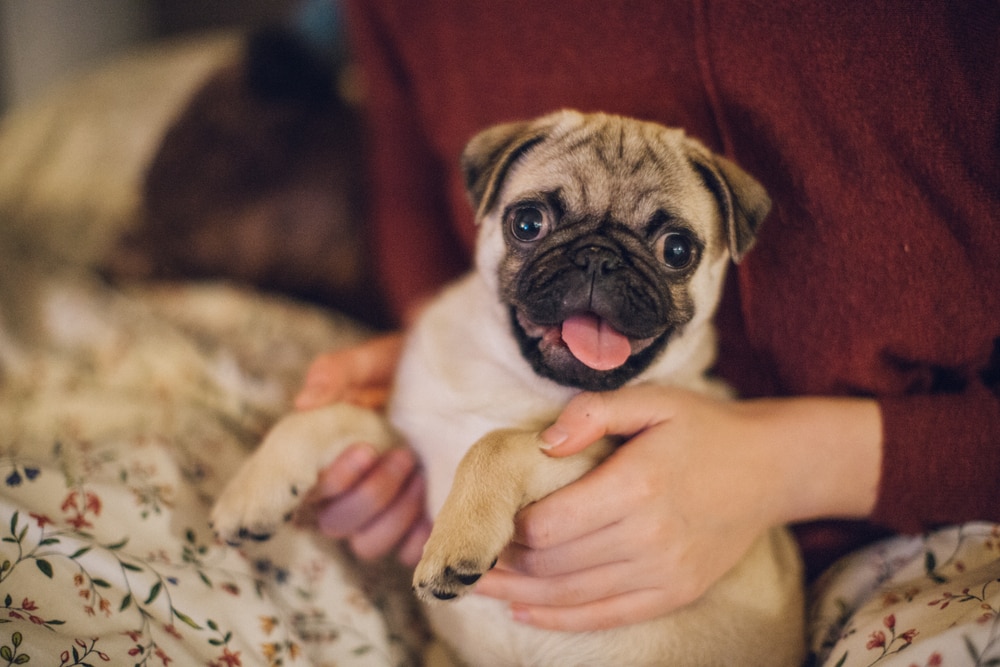
Why Pugs Aren’t Hypoallergenic
Pugs have short coats, which may lead one to think that they wouldn’t shed much, but unfortunately, a short coat doesn’t necessarily equate to a dog that sheds less. In fact, Pugs are pretty moderate shedders that shed all year round. Admittedly, due to their coat being smooth, they shed less than some other breeds (like Golden Retrievers or German Shepherds). But these small pups shed more than you think! That equals more dander and allergens in your home, which leads to more allergy symptoms.
How Can I Reduce Allergy Symptoms?
If you do have a Pug and mild allergies, there are ways you can ease your symptoms.
- Vacuum often! Since Pugs shed so much, you’ll need to vacuum frequently (or invest in a good robot vacuum to do it for you).
- Train your dog not to get on the furniture. Keeping your pet off your furniture won’t keep dog hair away entirely, but it will go a long way in reducing the amount of dog hair around you when you sit on the sofa. Get your pup a cozy dog bed, and place it next to furniture so they don’t feel left out.
- Get furniture with fabric that helps repel dog hair. Fabrics like polyester and velvet will attract dog hair, but other fabrics, such as leather, denim, and satin, will help keep it away. (You might want to get clothes in similar fabrics to reduce dog hair on you too.)
- Brush your Pug often! Brushing your dog at least once a week helps get rid of loose dog hair so it doesn’t end up on you or your furniture. Ideally, this should be done outside by a nonallergic family member.
- Keep your Pug out of the bedroom, and cover vents in your home with a cheesecloth. Dog hair and dander can travel through your venting system, but putting cheesecloth over vents in bedrooms or other rooms should help keep dog hair from getting in that way.
- Get an air purifier, as it can help reduce indoor airborne allergens, such as dander.
- Wash after your dog licks you. If you’re allergic to a dog’s saliva, one excellent way to reduce allergy symptoms is by washing your hands or face immediately after your dog licks you.
- Change clothes after playing or cuddling with your Pug. Any clothes you wear while hanging out with your dog are sure to be covered in hair, so changing out of them into clean clothes right away can be helpful.
- Speak to your doctor about your allergy to see if there are any medications that can help you manage your symptoms
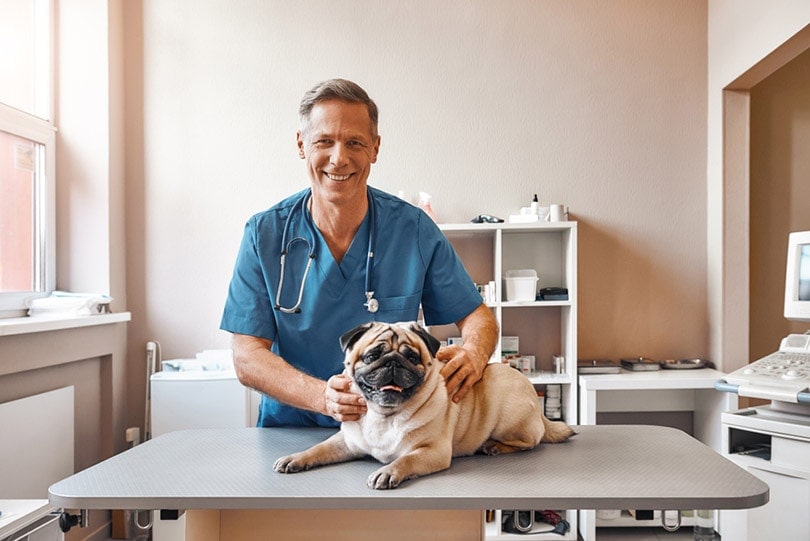
Hypoallergenic Alternatives
If you think your allergies won’t be able to handle a Pug, there are several other small dogs you might consider that may be less allergenic! Some dogs shed less and produce less dander, which might be easier on your allergies. However, it’s important to note there are different types of allergen proteins and different dogs produce different amounts, even if they are all from the same breed. Allergy sufferers react to different proteins, and recent research has shown that people who have dog allergies may not be allergic to all dogs. It’s not straightforward to predict what will trigger allergies!
Conclusion
Unfortunately, Pugs are not hypoallergenic and are instead rather prolific shedders. All that shedding means there’s more dog hair and dander flying around your home, which can induce allergy symptoms. Plus, some people are allergic to dog saliva, so that should be taken into account.
However, there are some ways you can ease allergy symptoms (if your allergies aren’t terribly bad). It’s important to consider your own health and how bad your dog allergies are before bringing a new dog into your family and home and committing to their lifelong care. Choosing a less allergenic breed with a low shedding or low dander coat may be a good option, but no dog breed is completely hypoallergenic.
Featured Image Credit: Lightfield, Shutterstock



